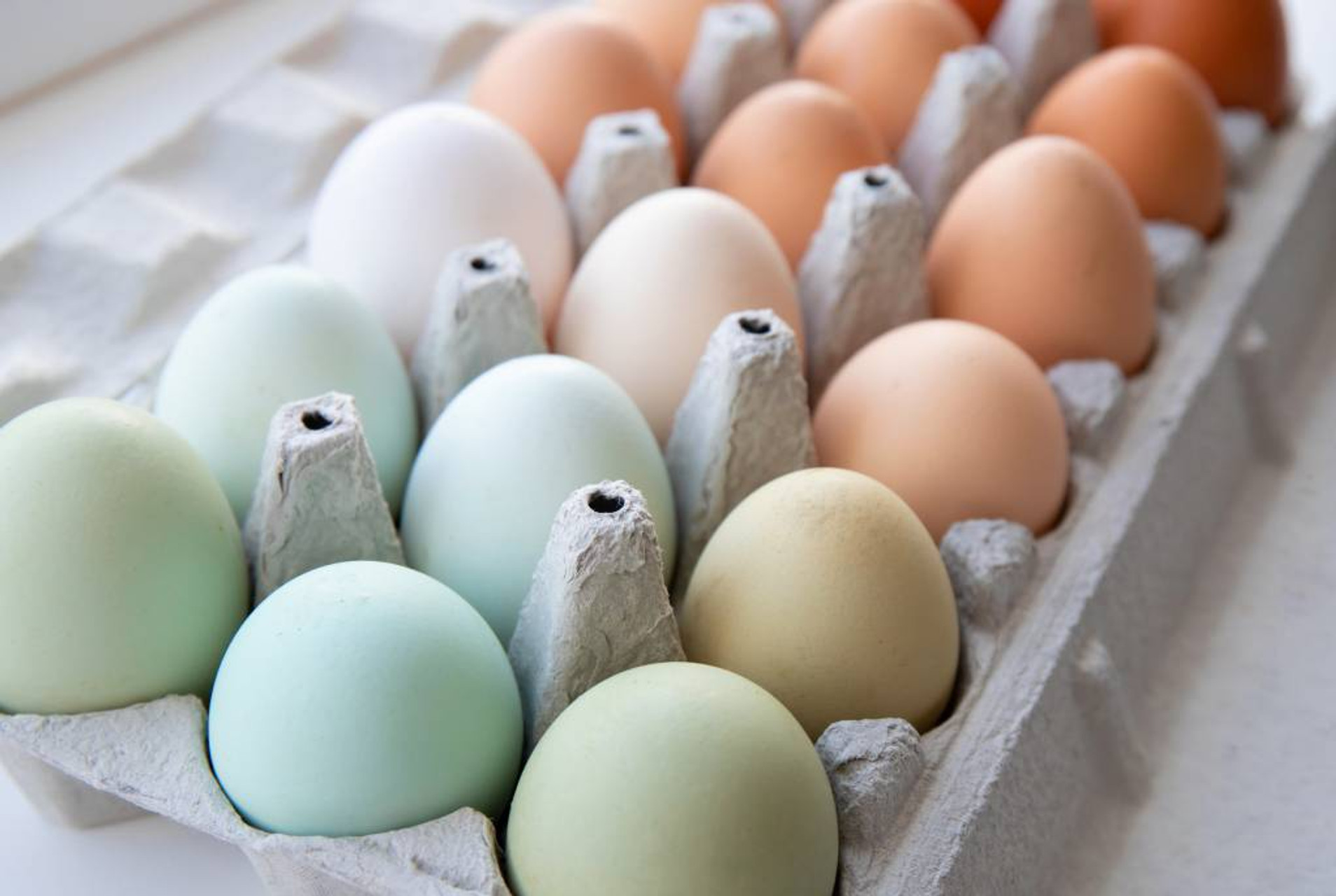The Truth About Chicken Egg Color: What It Really Means
Chicken egg colors are determined by genetics—not nutrition or quality. From white to brown to blue, each color has a simple explanation. Here's what you need to know:
- Genetics determine egg color by breed
- One hen = one consistent egg color
- Earlobe color hints at egg color
- Shell color doesn't affect taste or nutrition
- Colored eggs may cost more due to breed upkeep
Have you ever wondered why chicken eggs are different colors? Eggshells can naturally range from classic white to rich browns. We've even seen eggs in shades of blues and greens!
What do chicken egg colors mean?
Chicken egg colors can be fascinating and beautiful. However, they actually don’t tell you much about what's inside the egg.
Let’s crack the mystery in this chicken egg color guide. We'll debunk common chicken egg color myths below.
What Determines Chicken Egg Color?
Egg color is determined by genetics. Each breed has a specific set of genes that influence the pigmentation process during egg formation.
- White eggs typically come from chickens with white feathers and white earlobes, such as the White Leghorn.
- Brown eggs are usually laid by breeds with red feathers and red earlobes, like Rhode Island Reds.
- Blue and green eggs often come from Araucanas, Ameraucanas, or Easter Eggers.
Can the Same Chicken Lay Different Colored Eggs?
No. A chicken can only lay one egg color in its lifetime. However, the shade of the egg might vary slightly depending on several factors, like the hen’s diet, age, or environment. The base shell color will always remain the same.
How to Tell What Color Egg a Chicken Will Lay
One simple trick to help you determine what color a chicken will lay is to look at their earlobes. White earlobes often indicate white eggs, while red earlobes usually point to brown eggs. This trick is not foolproof, but can be surprisingly accurate!
Breeds known for colorful eggs can be a little harder to predict.
Do Different Color Chicken Eggs Taste or Cook Differently?
Believe it or not, egg color has no effect on taste, nutrition, or quality. What affects taste is the hen’s diet, health, and living conditions. Healthy, well-fed hens almost always produce the tastiest eggs!
Are Colored Eggs More Expensive for a Reason?
Brown, blue, and green eggs often cost more than white ones at farmers markets. The price tag is probably unrelated to the egg's color, however. Colored eggs cost more because of the hens, not the eggs.
Chickens that lay colorful eggs often:
- Eat more
- Are larger
- Lay fewer eggs annually
That means more feed and time per egg, which may increase the price.
Raise a Colorful Flock with Stromberg’s Chickens
Crack the color code, then build your dream flock and collect eggs in every shade! Browse our hatching eggs and live birds today!

